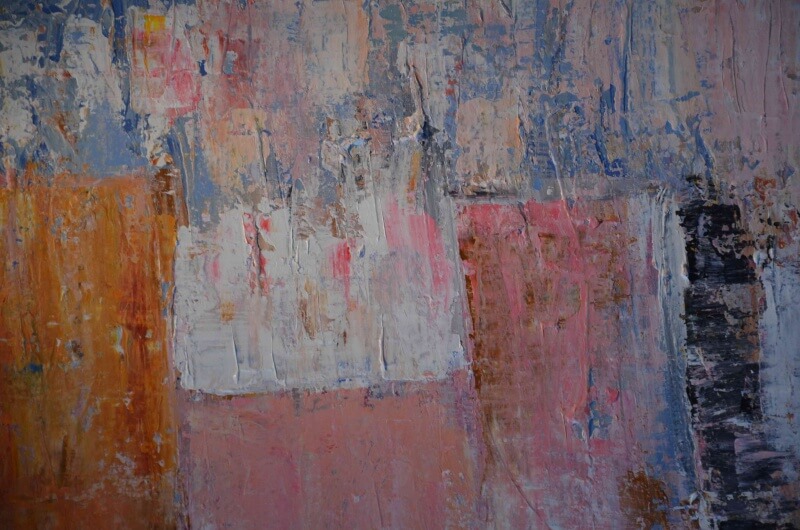It’s the tail end of Upper School lunch on the Colorado Academy campus, but despite grey skies and below-freezing temperatures, students, faculty, and staff are streaming into the Stevens Art Center, where two tired but delighted student artists and their teachers greet the crowd with big smiles.
Everyone heads straight into the Bonfils-Stanton Gallery for today’s Senior Portfolio Show where the students have come to engage with art and the artists: “Ulysses, what kind of symbols are these?” “I love your wall.” “You made a language in your art.” “You can really tell how much you care about your family [in these photographs].” “Your stuff is so cool!” “Zach, I love the balls on the floor!” The show, titled “Detonation on Impact,” is the culmination of years of Upper School art classes and two trimesters of intense preparation for Zach Turner and Ulysses Estrada.
Turner works with photography; in a very sportive series, he has photographed his young nephews at young artists, this program forces them to take risks and be vulnerable in a very receptive environment.”
While the show is the ultimate moment for public response, the learning experience may actually be less about the product and more about the process. “The students drive this process, and we help to guide their discovery,” says Hills. “And the students understand that the process helps define as much about who they are as artists as who they are as people. It is inspiring to watch their maturation, their level of investment, and their tolerance for failure,” she says. “When they hate a piece they have created, we cheer because, we tell them, ‘That means you care.’”
Portfolio shows are a more than 20-year tradition for seniors in the CA art department. Every Thursday, starting in January and running for nearly four months, artists present their work, usually in pairs. The art can include photography, architectural design, interactive multi-media, pen and ink drawings, print-making, installation art, sculpture, ceramics, digital art and paintings that run the gamut from landscapes to Clyfford Still-style abstract expressionism.
For some students, the journey to their senior Portfolio Show may continue as they pursue art school, and careers as artists, art educators, or curators. Even if students don’t pursue studies in the arts, the skills they develop through the Portfolio Program will continue to serve them through their lives.
Creating their art and mounting a show on deadline teaches students how to do their research, develop ideas and concepts, envision and organize a major project, manage their time and materials, make decisions, and communicate with teachers and peers. Past shows have consisted of just one piece of work to more than 80 pieces. They have to decide with whom they will show; then, they have to work collaboratively to design the gallery space and build the show. “The inevitable obstacles that come with the complexity of the process makes this very real-world,” says Hills.
This year, for the first time, that real- world experience is now even more a reality. The 2013 portfolio students had a public art show in the Core New Art Space on Santa Fe Drive near downtown Denver during the second week of April. “It is exciting and scary,” says Myers. “I am so incredibly impressed by what these students are doing. When I was their age, I wouldn’t have had the focus or the courage to put my self or my work on display. It is gratifying to see how this builds such confidence for students and how they mature as artists and as people,” he says.
Years of work, months of preparation, and now, on this snowy day in February, the Bonfils-Stanton Gallery has filled with people. Zach Turner and Ulysses Estrada seem take the praise from faculty and peers in stride — to a point. “I don’t like so many people giving me compliments,” said Turner. “I would rather give them than get them!”
